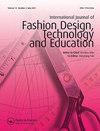Gender differences in adaptive clothing: applying functional, expressive, and aesthetic (FEA) needs of people with movement impairments
IF 2.2
Q3 BUSINESS
International Journal of Fashion Design, Technology and Education
Pub Date : 2022-06-04
DOI:10.1080/17543266.2022.2071468
引用次数: 3
Abstract
ABSTRACT Although previous studies have investigated issues related to disabled people’s social appearance and the shopping barriers younger generations face, the literature has not focused on people with mobility impairments while taking into consideration of factors in gender differences. Therefore, the purpose of this study was twofold: to conduct clothing needs assessment of people aged 18 and older with mobility impairments and to compare clothing needs assessments between genders, applying the functional, expressive, and aesthetic (FEA) needs model. The study, through personal interviews, found 10 major themes pertaining to FEA needs. Men and women from their early 20s to mid-60s did not differ greatly in their perception of clothing issues. Regardless of gender or age, the participants believed that retailers should provide more accessible clothing options that meet their needs, promoting the products at consumer-friendly price points.适应性服装的性别差异:应用运动障碍人群的功能、表达和审美需求
虽然已有研究对残疾人的社会形象和年轻一代面临的购物障碍进行了调查,但在考虑性别差异因素的情况下,文献并未关注行动障碍人群。因此,本研究的目的是双重的:对18岁及以上的行动障碍人群进行服装需求评估,并应用功能、表达和审美(FEA)需求模型比较性别之间的服装需求评估。该研究通过个人访谈,发现了与FEA需求相关的10个主要主题。从20岁出头到60多岁的男性和女性对服装问题的看法没有太大差异。不论性别或年龄,与会者都认为零售商应提供更方便的服装选择,以满足他们的需求,以消费者友好的价格推广产品。
本文章由计算机程序翻译,如有差异,请以英文原文为准。
求助全文
约1分钟内获得全文
求助全文
来源期刊

International Journal of Fashion Design, Technology and Education
Arts and Humanities-Visual Arts and Performing Arts
CiteScore
3.10
自引率
0.00%
发文量
36
 求助内容:
求助内容: 应助结果提醒方式:
应助结果提醒方式:


